
Concept explainers
(a)
Interpretation:
The isomer of given compound needs to be drawn.

Concept introduction:
Isomers can be defined as the organic molecules which have the same molecular formula and different structural formula.
Due to different structural formula, isomers have different physical and chemical properties.
Answer to Problem 7E
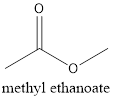
Explanation of Solution
The formula of the given compound is CH3CH2COOH (propanoic acid). Propanoic acid is a
The structure is represented as follows:
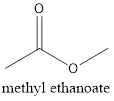
(b)
Interpretation:
The isomer of a given compound needs to be determined.
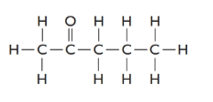
Concept introduction:
Isomers can be defined as the organic molecules which have the same molecular formula and different structural formula.
Due to different structural formula, isomers have different physical and chemical properties.
Answer to Problem 7E

Explanation of Solution
The given structure is as follows:
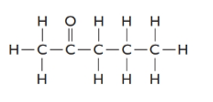
There are 5 carbon atoms thus, it is 2-pentanone.
2-pentanone is an isomer of pentanal as it also contains 5 carbon atoms, 1 O atom and 10 H atoms.
The structure of pentanal is represented as follows:

(c)
Interpretation:
The isomer of a given compound needs to be determined.
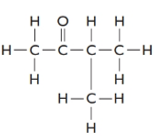
Concept introduction:
Isomers can be defined as the organic molecules which have the same molecular formula and different structural formula.
Due to different structural formula, isomers have different physical and chemical properties.
Answer to Problem 7E

Explanation of Solution
The given structure is as follows:
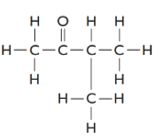
The formula of the given compound is
3-methylbutanone must be an isomer of pentanal as both have the same molecular formula but different structural formulas.
The structure of pentanal is as follows:

(d)
Interpretation:
The isomer of a given compound needs to be determined.

Concept introduction:
Isomers can be defined as the organic molecules which have the same molecular formula and different structural formula.
Due to different structural formula, isomers have different physical and chemical properties.
Answer to Problem 7E
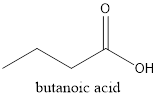
Explanation of Solution
The given structure is as follows:

The formula of the given compound is
Methylpropanoate is an ester as RCOOR is the general formula. Esters are isomers of carboxylic acid therefore it must be carboxylic acid with 4 C atoms that is butanoic acid.
The structure is represented as follows:
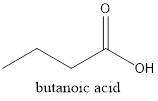
(e)
Interpretation:
The isomer of a given compound needs to be determined.

Concept introduction:
Isomers can be defined as the organic molecules which have the same molecular formula and different structural formula.
Due to different structural formula, isomers have different physical and chemical properties.
Answer to Problem 7E

Explanation of Solution
The given structure is as follows:

The formula of the given compound is

(f)
Interpretation:
The isomer of given compound needs to be determined.
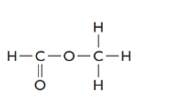
Concept introduction:
Isomers can be defined as the organic molecules which have the same molecular formula and different structural formula.
Due to different structural formula, isomers have different physical and chemical properties.
Answer to Problem 7E

Explanation of Solution
The given structure is as follows:
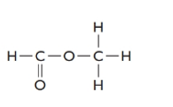
The formula of the given compound is

Chapter U2 Solutions
Living by Chemistry
Additional Science Textbook Solutions
Brock Biology of Microorganisms (15th Edition)
Organic Chemistry (8th Edition)
Biology: Life on Earth with Physiology (11th Edition)
Genetic Analysis: An Integrated Approach (3rd Edition)
Applications and Investigations in Earth Science (9th Edition)
Campbell Biology (11th Edition)
- ΗΝ, Draw Final Product C cyclohexanone pH 4-5 Edit Enamine H3O+ CH3CH2Br THF, reflux H Edit Iminium Ionarrow_forwardHow many hydrogen atoms are connected to the indicated carbon atom?arrow_forwardIdentify the compound with the longest carbon - nitrogen bond. O CH3CH2CH=NH O CH3CH2NH2 CH3CH2C=N CH3CH=NCH 3 The length of all the carbon-nitrogen bonds are the samearrow_forward
- Identify any polar covalent bonds in epichlorohydrin with S+ and 8- symbols in the appropriate locations. Choose the correct answer below. Η H's+ 6Η Η Η Η Η Ηδ Η Ο Ο HH +Η Η +Η Η Η -8+ CIarrow_forwardH H:O::::H H H HH H::O:D:D:H HH HH H:O:D:D:H .. HH H:O:D:D:H H H Select the correct Lewis dot structure for the following compound: CH3CH2OHarrow_forwardRank the following compounds in order of decreasing boiling point. ннннн -С-С-Н . н-с- ННННН H ΗΤΗ НННН TTTĪ н-с-с-с-с-о-н НННН НН C' Н н-с-с-с-с-н НН || Ш НННН H-C-C-C-C-N-H ННННН IVarrow_forward
- Rank the following compounds in order of decreasing dipole moment. |>||>||| ||>|||>| |>|||>|| |||>||>| O ||>>||| H F H F H c=c || H c=c F F IIIarrow_forwardchoose the description that best describes the geometry for the following charged species ch3-arrow_forwardWhy isn't the ketone in this compound converted to an acetal or hemiacetal by the alcohol and acid?arrow_forward
- What is the approximate bond angle around the nitrogen atom? HNH H Harrow_forwardOH 1. NaOCH2CH3 Q 2. CH3CH2Br (1 equiv) H3O+ Select to Draw 1. NaOCH2 CH3 2. CH3Br (1 equiv) heat Select to Edit Select to Drawarrow_forwardComplete and balance the following half-reaction in acidic solution. Be sure to include the proper phases for all species within the reaction. S₂O₃²⁻(aq) → S₄O₆²⁻(aq)arrow_forward
 ChemistryChemistryISBN:9781305957404Author:Steven S. Zumdahl, Susan A. Zumdahl, Donald J. DeCostePublisher:Cengage Learning
ChemistryChemistryISBN:9781305957404Author:Steven S. Zumdahl, Susan A. Zumdahl, Donald J. DeCostePublisher:Cengage Learning ChemistryChemistryISBN:9781259911156Author:Raymond Chang Dr., Jason Overby ProfessorPublisher:McGraw-Hill Education
ChemistryChemistryISBN:9781259911156Author:Raymond Chang Dr., Jason Overby ProfessorPublisher:McGraw-Hill Education Principles of Instrumental AnalysisChemistryISBN:9781305577213Author:Douglas A. Skoog, F. James Holler, Stanley R. CrouchPublisher:Cengage Learning
Principles of Instrumental AnalysisChemistryISBN:9781305577213Author:Douglas A. Skoog, F. James Holler, Stanley R. CrouchPublisher:Cengage Learning Organic ChemistryChemistryISBN:9780078021558Author:Janice Gorzynski Smith Dr.Publisher:McGraw-Hill Education
Organic ChemistryChemistryISBN:9780078021558Author:Janice Gorzynski Smith Dr.Publisher:McGraw-Hill Education Chemistry: Principles and ReactionsChemistryISBN:9781305079373Author:William L. Masterton, Cecile N. HurleyPublisher:Cengage Learning
Chemistry: Principles and ReactionsChemistryISBN:9781305079373Author:William L. Masterton, Cecile N. HurleyPublisher:Cengage Learning Elementary Principles of Chemical Processes, Bind...ChemistryISBN:9781118431221Author:Richard M. Felder, Ronald W. Rousseau, Lisa G. BullardPublisher:WILEY
Elementary Principles of Chemical Processes, Bind...ChemistryISBN:9781118431221Author:Richard M. Felder, Ronald W. Rousseau, Lisa G. BullardPublisher:WILEY





